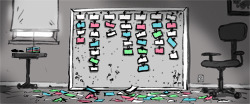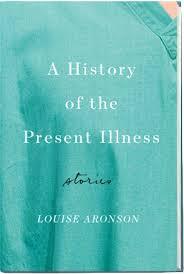Zackary Sholem Berger's Blog, page 27
March 3, 2013
When does patient-centered communication not lead to patient-centered care?
How do we make patient centered care happen? One way is to ensure that both patient and doctor are using good communication practices on a foundation of a positive relationship – this is the subject of my book, Talking to Your Doctor.
But what if the doctor and the patient talk the right way, and get along, but somehow the plan of care does not end up focusing on what is really important to the patient, the subtle and overt ways in which her circumstances are different from the textbook or algorithm? Part of making the leap from checklist to patient is to maintain a resolute though polite and productive skepticism towards quality boosterism, another topic of my book.
We also need to ask a scientific, empirical question: does patient-centered communication always lead to patient-centered care? No, it doesn’t, says our anecdote and intuition, but for the first time recently I saw a scientific study which helps to show this. Published in the Journal of General Internal Medicine, it’s a study of physicians’ reactions to unannounced standardized patients and their ability to “depart from the script” of how diseases are usually treated on the basis of widely accepted algorithms.

The study has many moving parts and is worth reading in full. In brief, though, the researchers trained the standardized patients to portray cases which would differ in important but various ways from a baseline case presentation. (By and large, doctors cannot distinguish between well-trained simulated patients and real-life equivalents.) For example, a woman could come to see her doctor for an evaluation before a hip replacement. Rather than going through the motions, the astute physician should notice the red flags that some simulated patients were told to portray. For example, she might have symptoms of hypothyroidism. Or, in a separate alternative portrayed by some simulated patients, there might be a troubling context for the surgery (e.g., the woman’s desire is to have the surgery so that she can take sole care of her adult son with end-stage muscular dystrophy).
A widely used classification system was used to measure the patient-centeredness of the physicians’ communication, and independent raters – doctors themselves – then evaluated, blinded to the communication ratings, whether the doctors had met the challenge of the simulated patients, caught the red flags, and completed a plan of care which acknowledged the complexity of the individual before them.
You can guess the punch line: there’s no relationship between them, at least not found in this study. With the usual caveats – read the article to get the details – we come around to a basic question. If patient-centered communication does not inexorably lead to patient-centered care, should we be measuring something else? And does communication matter as much as we think it does?
No big surprise: I think it does matter, for ethical and psychological reasons as much as due to any possible impact (or lack thereof) on the plan of care. I’ll touch on those reasons in future posts.
February 24, 2013
Finding the me in team
The more I try to help people in this field of mine, the more I realize that it doesn’t take a village – it takes a huge industrialized city, all its wires and arteries humming with constant activity, just to try and make one woman better. In this case, one smiling woman in her fifties, ethnicity I couldn’t figure and of dubious relevance, who came to our clinic seeking advice about her asthma that we had treated before. The medicines were already at their maximum doses, and she wasn’t feeling much better. I perked up when the resident told me what sort of work she did. “She works at a towel factory.” A towel factory? Like something out of Dickens?
There’s a lot that’s Dickensian today: the grinding poverty; the squashed tenements and desperate immigrants; the jobs that you don’t want to think about too hard, like towel making. Mounds of dust, is what it involves (as we found out from talking to the patient), layers of dust everywhere, in a factory where the windows aren’t opened (“it gets too cold”), no one wears their masks (“it feels like we’re choking”), and, of course, the whole establishment is non-union.
I knew to ask these questions because I wrote a PhD thesis on workplace exacerbation of asthma. My methodological and topical interests have shifted, but my interest in workplace health has not changed. Only now I realize what’s required to improve this woman’s asthma: not just the team here in our Johns Hopkins residents’ clinic, but a second team, charged with a broader responsibility: making it possible for her, first, to wear a mask comfortably on the job, and – even more fundamentally – to be placed in a job which does not worsen her breathing. The medical team needs to meet up with the public health team. We doctors can only make that happen if we realize the possibilities and limits of our roles.

A different example of teamwork is in the hospital during a code. (I am thinking about this because I need to renew my ACLS certification, which one can do on line [sponsored link]). A code is done as a team, and every one on that team should fulfill their assigned role to the letter. Clear communication is vital to a good code – patient safety experts know this.
But as often as the doctor has to play their role to the letter, they also have to know when to step outside it: to make a decision that has not been considered before. Perhaps the woman doesn’t have asthma after all, or the code is something that – given previous discussions – should never have been attempted. There are roles, and then there is our responsibility as individuals: the me in team.
As a researcher and clinician, I want to make my patients better and I believe in the value of empirical study. But as a doctor in relationship with his patients, I know that people never fit totally inside the algorithmic checkboxes we try and put them in. My book talks about that difficulty of squaring the individual circle. Just as we need to make sure we can find ourselves in the team, we need to let our patients be their own people inside the system of care.
February 17, 2013
Stories to heal a city?
What is the difference between a mere anecdote and a story? Can stories ever heal, and can a story with a naturally happy ending be as effective as a literary tragedy which seems to end in the middle, with purposeful suddenness? And what happens when the narrator is not a disembodied voice, but someone who has to deal with the people behind the tales they tell, who is supposed to help those behind the story when the book is shut?
A doctor is a healing storyteller, as Louise Aronson points out from many different angles in her beautiful and thoughtful A History of the Present Illness. Being a doctor means hearing stories that you can never share in all their specificity, and sharing in joys that others are not privy to. The doctor-writer is thus tempted to tell all her stories from a doctor’s-eye view. Aronson does not make this mistake, but broadens her Chekhovian vision to encompass the multifarious San Francisco of her birth and professional life as a geriatrician: as a writer in that world, she portrays doctors and patients alike, the young and old, in every hue of skin and character.
She weaves together the stories in this book to portray not just people with illness and those who care for them, but a grand beautiful city, one of the great metropolises of contemporary medicine, which is slowly falling apart: its poor uncared for, its hospitals bursting. At the same time, she shows the psychic price that doctors pay, the wounded healers many of us are.
In her academic life, Aronson is an advocate for public medical communication. This book meets just that need, but communication is too cold a word: it is a cry from a feeling heart in a language that any mortal person can understand. As someone who treats patients and tries to tell their stories, I admire Aronson’s eye and heart, and recommend this book unreservedly.
February 10, 2013
The game of life as seen from the cloud
In my book, Talking to Your Doctor, I discuss at length the importance of the doctor-patient relationship, and how mindful communication can strengthen that relationship to the benefit of our health.
What do we do, however, to encourage that relationship when our health care system encourages fragmentation? Even if we had a single payer system, the variety of specialists, health care settings, and treatment o
[image error]
ptions makes it unlikely that one person will see one provider for all – or even most? – of their health care needs.
I try to outline one answer in my book, based on communication. Another answer, as many other people have proposed, has to do with portable electronic health records that are secure and located on reliable servers (the “cloud”). If we can’t be sure that our primary care provider has all our health care data, we can make sure that we do.
But if that record is really to represent us, ourselves, we need to organize it differently than today’s electronic medical records. They should not be based on the individual visit, or the atomized problem list, but on our entire life and what we find important in it: the domains of our existence that we wish to optimize and ensure through good health.
Of course, a blog post is not the way to elaborate at length on what a record like this would look like. But little by little…
February 4, 2013
TALKING TO YOUR DOCTOR: buy the book in July!
My new book, Talking to Your Doctor: A Patient’s Guide to Communication in the Exam Room and Beyond, will be out in July. You can pre-order it now; see the publisher’s page for the table of contents. And if you know any bookstores with good taste in books about health, medicine, and communication, please let me know or send them my way.
TALKING TO YOUR DOCTOR presents the new science of communication to help improve not just your time in the doctor’s office and your own health, but promote the health of your community, guiding our entire health care system toward a humane medicine based on relationships.
The author, Zackary Berger, M.D., Ph.D., is a practicing primary care/internal medicine doctor and an Assistant Professor at the Johns Hopkins School of Medicine, where he teaches medical students and residents. He researches doctor-patient communication in the clinic and in the hospital to understand how our health care system can be made more responsive to ordinary people. This book is based on his expertise and the experience of his patients.
The last time you went to your doctor, you might have emerged feeling dissatisfied and disoriented. What did you talk about together, after all? You didn’t ask all the questions you wanted answers to, and you don’t remember everything the doctor told you. What is the plan? How do we get there? Nothing was clear after you left the office, and you don’t know whether it’s your fault or the doctor’s.
Maybe it’s your fault, or the doctor’s fault, or the blame can be laid at the feet of the entire health care system. But that’s beside the point: the important thing is to identify the problem at the root of this experience and take steps to change it. That’s what this book does.
In “Talking to your Doctor,” you’ll:
• Learn how to talk to your doctor – and get your doctor to talk to you
• Discover the science of doctor-patient communication to the lay public
• Remake the relationship with your doctor, and our health care system, on the basis of good communication
• Make sure your visit with the doctor is productive and meets your needs
• Help yourself and others avoid over-testing and over-treatment
February 3, 2013
Something about sports
I used to roll my eyes at sports, thinking it was all a waste of time. Gradually, over the past three years, that has changed, culminating finally in a wholesale transformation of my opinions with the Ravens’ victory in the Super Bowl.
You can call me a fair-weather fan, but I am not a fan. I don’t know anything about football, I have not followed the regular season, and the two things that have interested me most in the past weeks about the sport have been the double murders that Ray Lewis did or did not commit in Atlanta in 2000 and the concussions that the NFL has been ignoring with the help of some dubious, and weirdly deceptive, league physicians.
What I like about the Ravens is that it makes our city feel good. Sure, there are plenty of important problems Baltimore should pay attention to. But no one fixes an unerrant gaze on life and death all the time. No one shutters the art museums in time of war.
I saw a patient last week with a terminal illness. I talked to him about what he liked to do when he was healthy. “All kinds of sports,” he said, and I could have sworn that out of the corner of my eye I saw Socrates murmur something about virtue.
Thanks to the Ravens I knew exactly what to say. I asked him if he was watching the game on Sunday. “You better believe it,” he said, and smiled.
I hope he’s happy today.
January 27, 2013
What it means to be healthy
If health means avoiding disease, we need to find the best evidence on prevention: how to keep the sickness we dread from creeping up on us.
If health means a broader well-being, we need to find the best way to live. We can live poorly while being free of disease, but we can be fully realized human beings even while terminally ill.
As a doctor I am rarely asked how to achieve a state of broader well-being. This is probably as it should be. I have not been trained for such all-encompassing life counseling, nor am I comfortable in such a role.
But maybe tomorrow’s doctors should be expected to counsel in this way. There is so much we cannot control. We will all die; but we will not all die in the same way.
January 21, 2013
Help me, I’m deciding
I went to a meeting of a panel this past week under the auspices of the Institute of Medicine. Called the Evidence Communication Innovation Collaborative [yes, I know], the group discusses a number of topics around the general ambit of communicating medical evidence to patients. We spent a lot of time, productively, on the topic of decision aids. A lot of people at the meeting really like them.
I like them, too, and it’s not hard to understand why. Decision aids are the fuel of shared decision making. Information should not be concentrated in the hands of the doctor; rather, it should be presented to the decider – which we presume is the patient, the ordinary person – in a way relevant to them.
But they are not the panacea:
We forward thinking doctors know in our heart of hearts that decision-making should be shared with the patient; unfortunately, not all patients think that way. Some still rely on the physician to make their decisions.
Even the alternatives, and the risks and benefits attached to each one, are not so obvious without some thought. And that thought is not the view from nowhere, as a philosopher put it, but dependent on the point of view of the person thinking. The risks, benefits, and preferred alternatives depend on the kind of person doing the choosing. And who’s to say that a patient from one race, say, or economic stratum, will react to alternatives the same way as another?
Count me encouraged but skeptical: there were a lot of people in that room ready to share decision making. But a decision aid is only as good as the decisions it includes. We need to know a lot more about how people make decisions, and how they talk to their doctors, before we can expect such aids to do more than reproduce our current health care system’s inequalities and insensitivities.
January 13, 2013
Bal-Shem, by Itzik Manger
The Bal-Shem stands at the village edge
and sees the night roll up its veils.
Dark, and in the darkness fires flash:
A golden vision on the black soil.
A golden vision on the flag of night.
Thrice holy. He falls down, kneels
and drinks up its soul like a melody
which the wind brought from a distant steppe.
Drunk with the colors and magic
he stays a moment more, alone with the night
until a prayer starts its twilight on his visage.
Then he runs back to the joy of settlement
knocking on dark walls with the news
“The world is holy and three times beautiful!”

Original Yiddish here. Translation mine.
January 6, 2013
Mistakes are made
I made a mistake this past week. It worked out all right – I fully informed the patient, and she’s fine. (I’m okay too; thanks for asking.) This mistake was unusual because I realized it when it happened. As a fallible human being, I make mistakes all the time, and most of the time I don’t realize it.
Sure, our system is paying more and more attention to mistakes, but most of the spotlight is focused on “errors,” a term which implies a systematic failure. A lab result goes unreported, or reported to the wrong person; a medication list isn’t checked correctly; a procedure is done in the wrong way.
We internists, however, like to think – and perhaps this is mistaken too? – that our job depends on individual cognition as well. Without our vaunted brains, the diagnosis isn’t made, the risks and benefits of treatment aren’t hashed out, or the patient isn’t cared for with attention and compassion.
What are the systems we can put in place to guarantee optimal performance at the individual level? Can we make quality improvement happen inside our own brains? For that to happen, wouldn’t we have to realize whenever we made mistkaes? And how often is that going to be the case?
I mean, mistakes.



